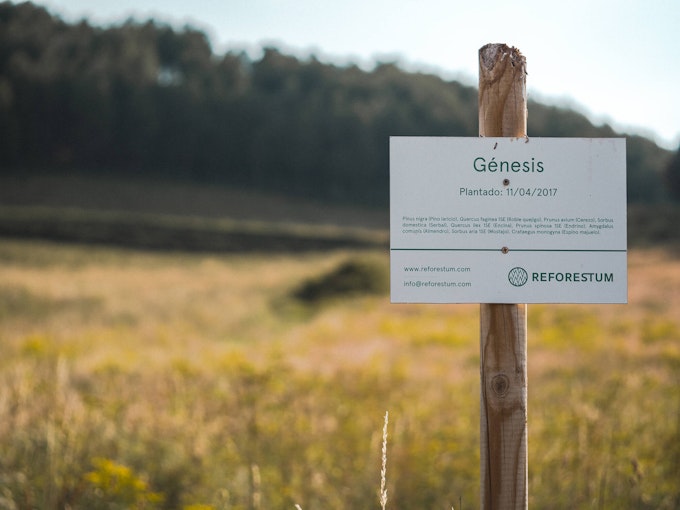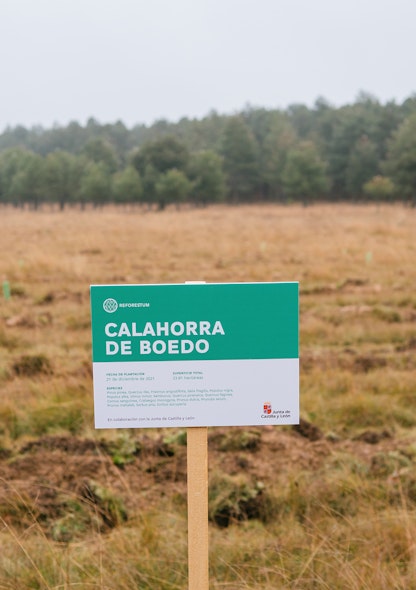Losing Sleep Over Climate Change? Keep Calm and Reforest
When the intergovernmental panel for climate change issued their most recent report saying we all have only until 2030 to get our act together, there was panic. You felt it, too. It’s inevitable--warnings are given, and we all feel the urgency. For a little while, at least.
The IPCC says our planet will reach a risky 2.7 degrees Fahrenheit or 1,5 degrees Celsius as soon as 2030. That means there is a greater risk of not necessarily the apocalypse, but something akin to it: extreme drought, wildfires, floods, and food shortages for hundreds of millions of people.
Never fear, Reforestum is here. The first step is always admitting you have a problem. As humans we do, and we are admitting it: climate change is a threat, and with the increasing effect of greenhouse gas emissions, it is becoming more and more real. The feeling of anxiety and panic is normal and symptomatic of the fact that we know something bad is about to happen. But the healthiest response doesn’t lie in succumbing to the panic. Take a look at humanity and its response to another grave threat: At the very beginning of World War II, in 1939, when Hitler was attempting to end the Western world as we knew it, the British coined and marketed a phrase that still resonates with millions today: Keep Calm and Carry On. The poster was intended to raise the morale of the British public during air bombings by Nazi planes; and it worked: although the Germans’ Blitz took place, the British maintained a “stiff upper lip” and exhibited all the qualities necessary to survive: self-discipline, fortitude, and the ability to remain calm in adversity.
What the British did so well during World War II was getting to know their enemy so they knew how to best mitigate a disaster. When it comes to climate change there are many great study resources out there. One of the best books written on this topic is "Drawdown: The Most Comprehensive Plan Ever Proposed to Reverse Global Warming". It is edited by environmental business icon Paul Hawken. To spare you hours of technical reading time, the interesting theme that arises from Hawken’s compilation is that forests play a key role in saving the planet.
Deforestation and degradation of forest ecosystems are responsible for about 1/8 of anthropogenic greenhouse gas emissions today (IPCC, 2014). Land use solutions reduce emissions from deforestation and degradation of ecosystems. Some protected ecosystems (e.g. coastal wetlands) continue to sequester carbon, while forest restoration and timber and biomass crops sequester significant amounts of carbon.
Hawken continues to describe how protecting and growing forests, which fall under the larger umbrella of ecosystem restoration, provide some of the greatest hope to humanity with the highest percentage of mitigation of greenhouse gas emissions: Solutions in this sector include ecosystem protection, ecosystem restoration, and timber and biomass crops. Within this sector, ecosystem restoration solutions have the greatest mitigation impact, accounting for 55.9 percent, 54.2 percent, and 52.4 percent in the Plausible, Drawdown, and Optimum Scenarios, respectively.
So a solution to our 2030 time cap is already known: reduce emissions and protect, plant and cultivate more forests.
But what are you going to do, really, at the end of a long work week? Go out, buy land and start dropping seeds? No way. That expectation is not probable nor is it even plausible. Life is hard enough as it is, and taking on a forest isn’t going to help relieve stress. It’s only going to create more of it.
Enter Reforestum

At Reforestum we make it possible for you to alleviate those anxieties and fears and take responsibility for the planet by reforesting from the comfort of your own laptop. We do this through four very simple steps, and none of them require you getting up from your couch if you don’t want to:
Step 1: You do the math. Calculate your carbon emissions from flights, diet, and car travel. Reduce your emissions wherever you can, then offset the rest with forests.
Step 2: Stake a claim. We offer you locations all over the planet from which you can choose a piece of land to convert back into indigenous forests. Using your calculations above, we offset those carbon emissions by planting a forest.
Step 3: Watch it grow. With the help of our online remote tracking system through our app you can keep track of your forest at all times and watch it grow. You can even visit your forest and see the fruit of your laptop’s labor.
Step 4: Enjoy. Our ultimate goal is for you to be able to call yourself carbon neutral by offsetting your carbon footprint. Knowing you are carbon neutral allows you to enjoy this planet and rest in the knowledge that it will be here to enjoy for many generations to come.

So yes, there is light at the end of the 2030 tunnel. There is hope for a future for yourself, your children, and for our planet. That hope is rooted in the knowledge and awareness of how the science of climate change works; namely, reducing your emissions and offsetting your remaining greenhouse gas emissions with the protection, planting, and cultivation of forests. When you panic, it’s hard to take meaningful action. So keep calm and reforest.





